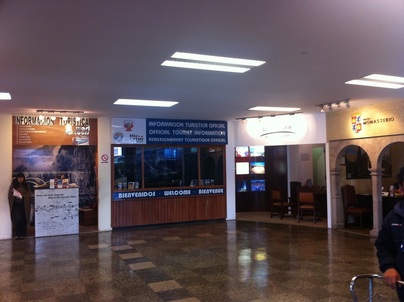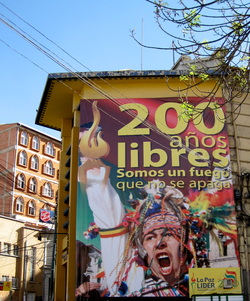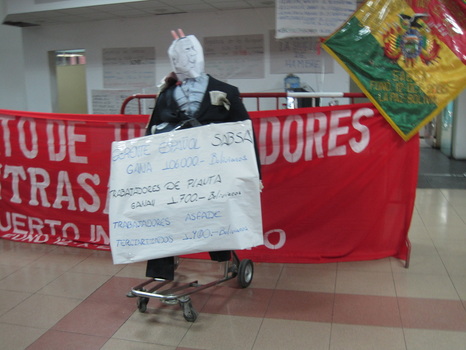“Would you like a tour?”
“Seniorita, what are you looking for?”
“El baño.”
I walked out of customs in Cusco and into a virtual shopping mall of tour agencies. Each of them with large color posters advertising Inca sites or “cultural” offerings. I didn’t pause long enough to inspect them, and only after getting in a taxi did it occur to me I should have taken a photo (the one below is from another travel blog). But it was striking, especially, because it provided such a contrast with what I had seen at the La Paz/El Alto airport just an hour earlier (and as a side note, it was one of those amazing flights that left at 9:15 am and arrived at 9:05 am).
Or maybe it’s really just that I like keeping Bolivia a little off the beaten (Gringo Trail) path.




 RSS Feed
RSS Feed
